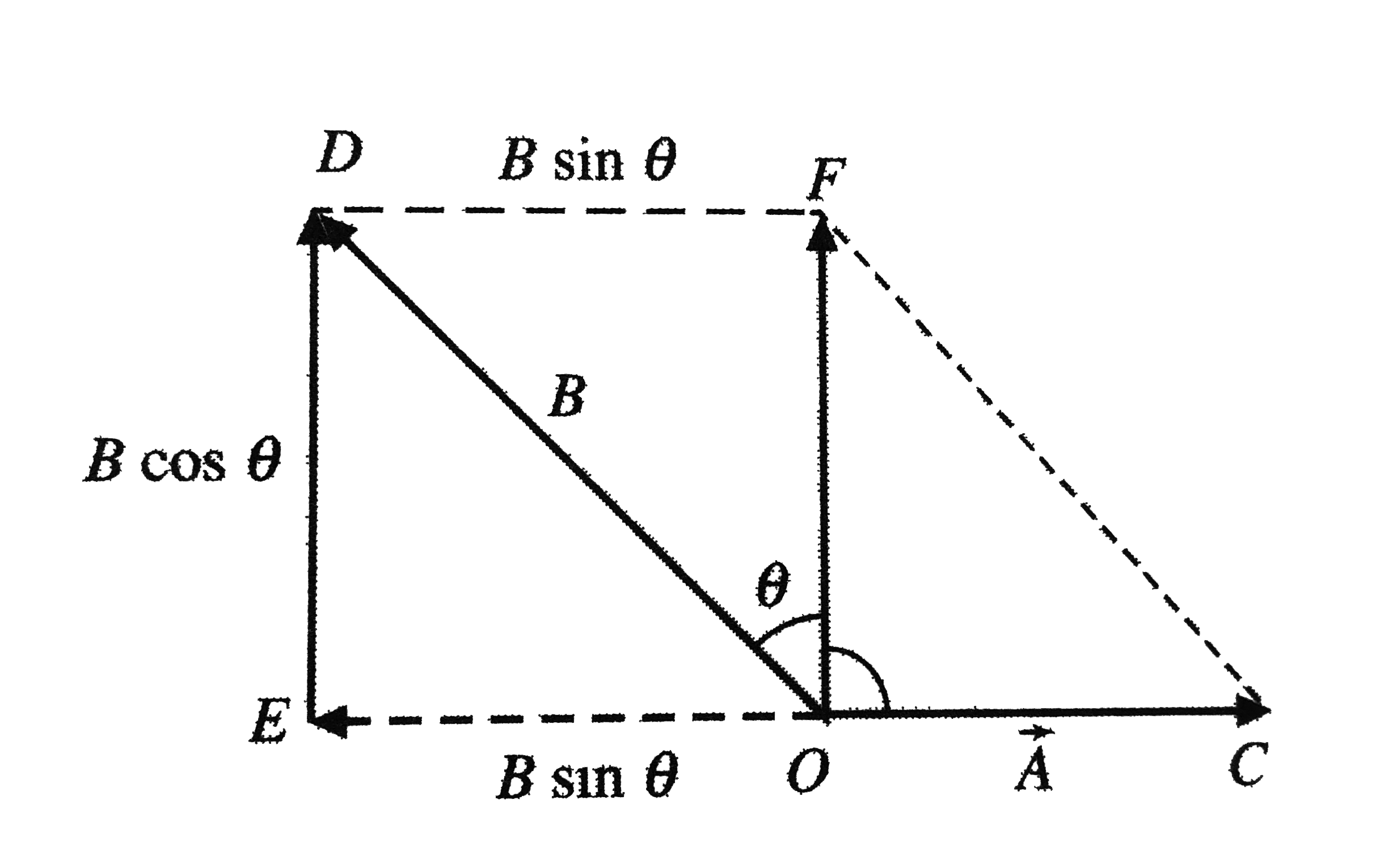There are two vectors →A and →B mutually perpendicular then component of →A + →B in direction of
To find the component of the vector sum →A+→B in the direction of the vector difference →A−→B, we can follow these steps:
1. Define the Vectors: Let →A and →B be two vectors that are mutually perpendicular. This means that the angle θ between them is 90∘.
2. Express the Vectors: The vector sum →P=→A+→B and the vector difference →Q=→A−→B.
3. Find the Component Formula: The component of vector →P in the direction of vector →Q is given by the formula:
Component of →P in the direction of →Q=→P⋅→Q|→Q|
where ⋅ denotes the dot product and |→Q| denotes the magnitude of vector →Q.
4. Calculate the Dot Product: Compute →P⋅→Q:
→P⋅→Q=(→A+→B)⋅(→A−→B)=→A⋅→A−→A⋅→B+→B⋅→A−→B⋅→B
Since →A⋅→B=0 (because they are perpendicular), we have:
→P⋅→Q=|→A|2−|→B|2
5. Calculate the Magnitude of →Q: The magnitude of →Q is given by:
|→Q|=|→A−→B|=√|→A|2+|→B|2−2|→A||→B|cos(90∘)
Since cos(90∘)=0, this simplifies to:
|→Q|=√|→A|2+|→B|2
6. Combine the Results: Now substitute back into the component formula:
Component of →P in the direction of →Q=|→A|2−|→B|2|→Q|
Substituting for |→Q|:
=|→A|2−|→B|2√|→A|2+|→B|2
Final Answer:
The component of →A+→B in the direction of →A−→B is:
|→A|2−|→B|2√|→A|2+|→B|2
Component of →P in the direction of →Q=→P⋅→Q|→Q|
where ⋅ denotes the dot product and |→Q| denotes the magnitude of vector →Q.
→P⋅→Q=(→A+→B)⋅(→A−→B)=→A⋅→A−→A⋅→B+→B⋅→A−→B⋅→B
Since →A⋅→B=0 (because they are perpendicular), we have:
→P⋅→Q=|→A|2−|→B|2
|→Q|=|→A−→B|=√|→A|2+|→B|2−2|→A||→B|cos(90∘)
Since cos(90∘)=0, this simplifies to:
|→Q|=√|→A|2+|→B|2
Component of →P in the direction of →Q=|→A|2−|→B|2|→Q|
Substituting for |→Q|:
=|→A|2−|→B|2√|→A|2+|→B|2
The component of →A+→B in the direction of →A−→B is:
|→A|2−|→B|2√|→A|2+|→B|2
Topper's Solved these Questions
- TEST PAPERBOOK - ALLENCHAPTER - TEST PAPEREXERCISE - CHEMISTRY SECTION-II
3 Videos
- TEST PAPERBOOK - ALLENCHAPTER - TEST PAPEREXERCISE - MATHEMATICS
25 Videos
- SEQUENCE AND PROGRESSIONBOOK - ALLENCHAPTER - SEQUENCE AND PROGRESSIONEXERCISE - Exercise (JA)
12 Videos
- TEST PAPERSBOOK - ALLENCHAPTER - TEST PAPERSEXERCISE - PHYSICS
4 Videos
Similar Questions
Knowledge Check
In the question number 20, a unit vector perpendicular to the direction of →Aand→B is
A−2ˆi−ˆj−ˆk√6B2ˆi+ˆj+ˆk√6C2ˆi−ˆj−ˆk√6D2ˆi−ˆj+ˆk√6
If for two vector →A and →B, sum (→A+→B) is perpendicular to the difference (→A−→B). The ratio of their magnitude is
View SolutionIf →A+→B=→R and 2→A+→B s perpendicular to →B then
View SolutionThe resultant of →A and →B is perpendicular to →A. What is the angle between →A and →B ?
View SolutionThe resultant of →A and →B is perpendicular to →A. What is the angle between →A and →B ?
View Solution→aand→b are two unit vectors that are mutually perpendicular. A unit vector that if equally inclined to →a,→band→a×→b is equal to
View SolutionIf →a,→b,→c are unit vectors such that →a is perpendicular to the plane of →b,→c and the angle between →b,→c is π3, then ∣∣→a+→b+→c∣∣=
View SolutionIf the vectors →a and →b are perpendicular to each other then a vector →v in terms of →a and →b satisfying the equations →v.→a=0,→v.→b=1 and [→v→a→b]=1 is
View Solution

 .
.